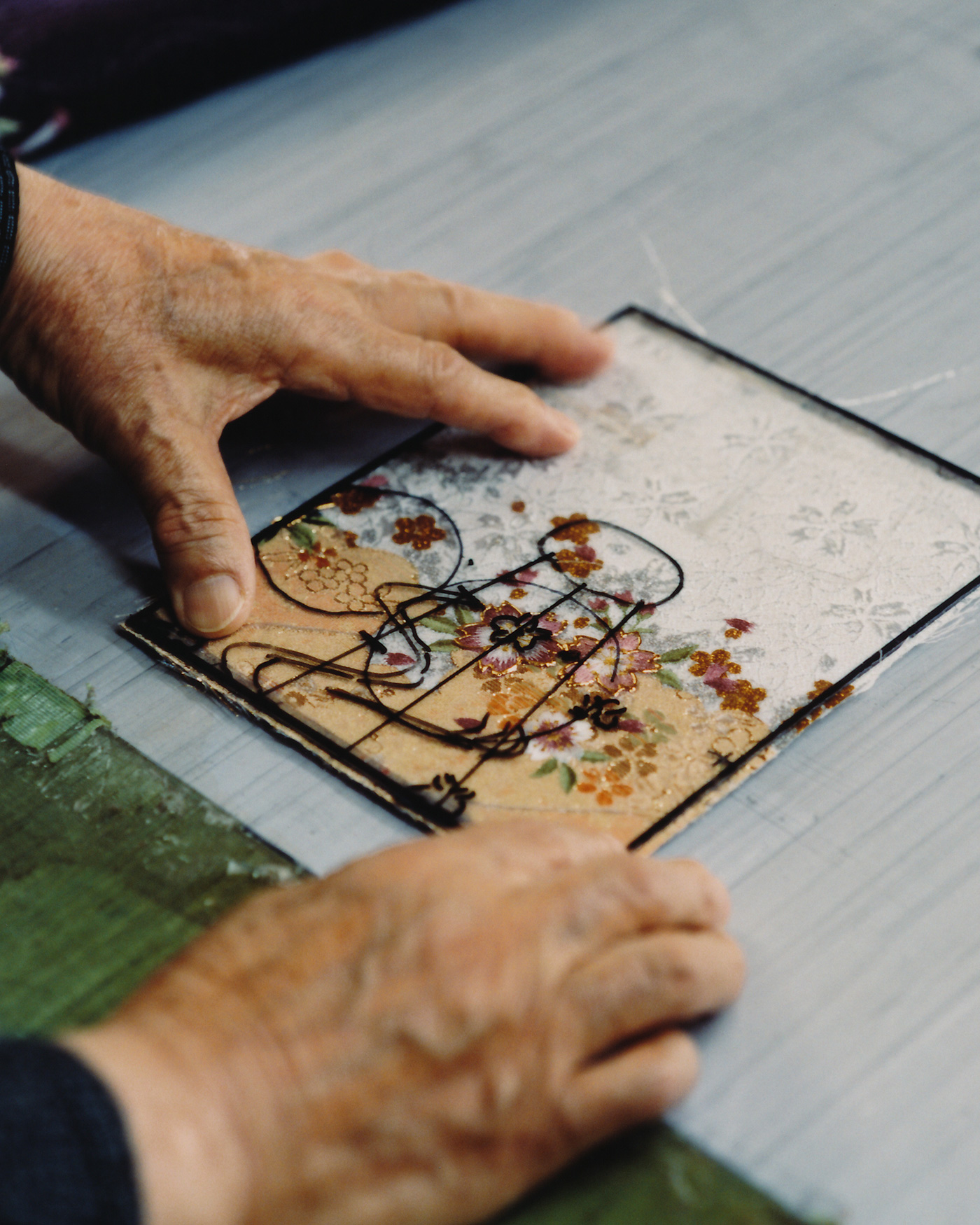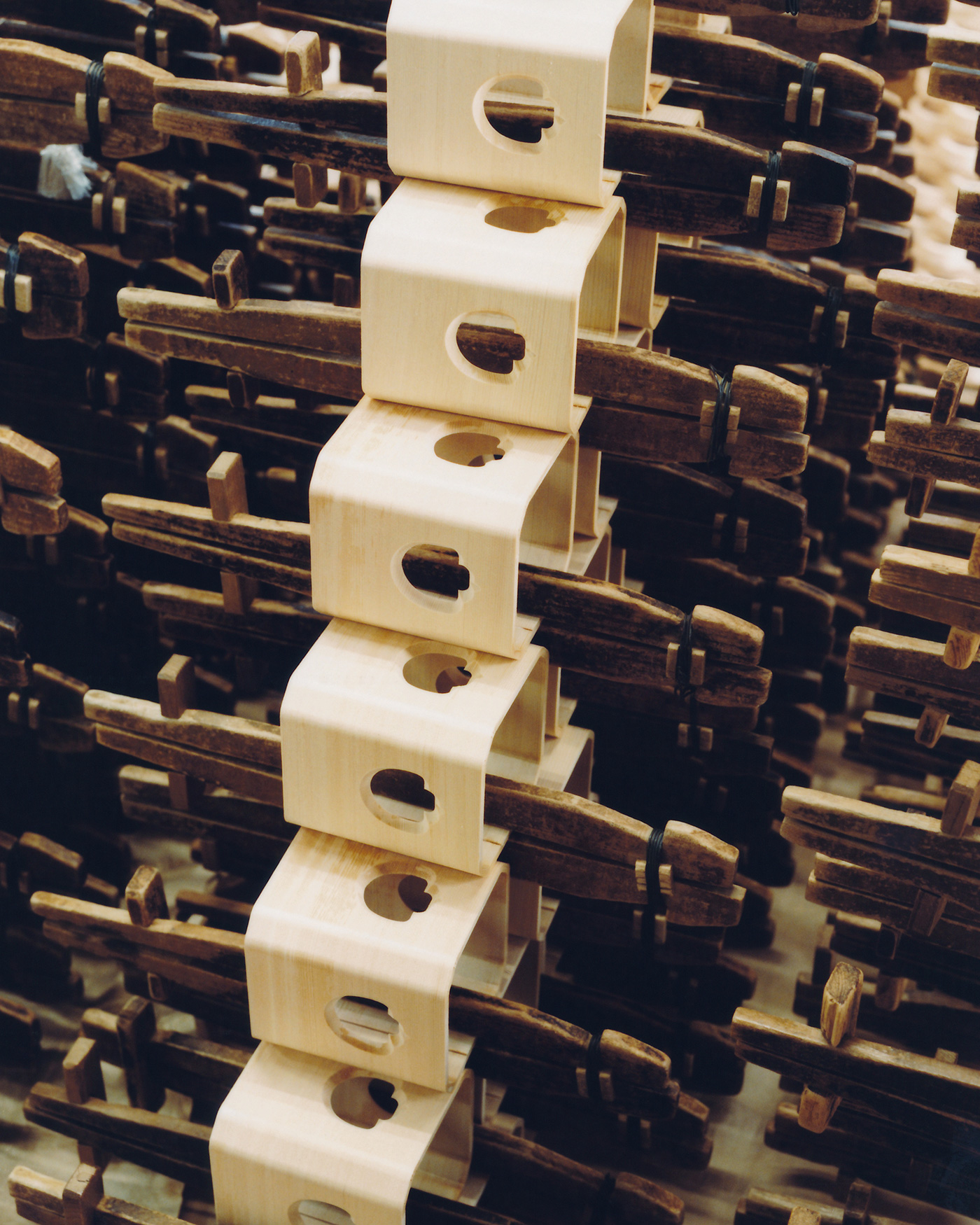Did you learn any new skills or adopt any new ways of thinking or seeing things through working with the designer?
I had only made dolls before, so it was hard for me to imagine how to use my skills for something totally different. I had this preconception that doll-making was not very adaptable, and I was nervous at first. The designer proposed making a flower vase, but at first I wanted to try making dolls for overseas markets. The designer said that since it was for foreign customers, it would be better not to make it look like a doll. That changed my mindset and made me think, “Let’s try something new with a different approach.” As I went through trial and error, I had several moments where I thought, “Wow! This is fun.” I learned a lot from it. I think the collaboration opened up new possibilities for my doll-making skills.

Did you encounter any surprises or discoveries while making the sample?
It was interesting to combine different materials such as clothing fabric and Koshu Inden. At first, I was stuck on the idea of “putting a kimono on a vase.” I couldn’t escape from the shape of a doll. I made a layer for the front only, but the designer suggested changing it because it looked too much like a doll. We ended up layering the fabric on both sides like a collar. I hadn’t thought of that before. When I actually made the prototype, I thought, “This is great! I can do this.”
Tell me about the differences and challenges in making this product compared to your usual doll-making.
We used materials and shapes that were unfamiliar to us, so it was a process of trial and error.
We had to figure out how to wrap it, how well it would hold together, and how to adjust and finalize it. In doll making, we usually start with a clear image in our mind before we work on it, but this time we couldn’t do that. Everything was different from our usual materials and methods, so we had to come up with creative solutions for cutting and sewing.

So you struggled with the different materials and methods.
Yes. We also had trouble with how to apply glue, because the fabric was different. Specifically, we had to layer the fabric by cutting and sewing, but we had to check the thickness and texture of the material as we did it, and find new ways of applying pressure and wrapping to shape it.
I mentioned earlier that we used layering techniques from our doll-making. The precision of the layering has a big effect on the final quality. The more layers you add, the harder the work gets. Especially since the fabric was not what we usually use, it was hard to get the layers to line up exactly. We had to adjust it millimeter by millimeter. The volume of the fabric made it either too wide or too narrow, so we had to layer it carefully while adjusting it to fit the base. We also designed the dimensions of the base from scratch, so we asked the woodworker several times to tweak the height and width until we got the best balance.

How many craftsmen were involved in making this product?
About five to seven. There’s a woodworker who makes the wooden base, a cloisonne craftsman who makes the tube for the vase, an Inden craftsman and the textile-related workers.
Mr. Kitagawa, you are the second generation doll maker at Nagae Traditional Dolls. What is your vision for passing on your skills in the future?
My daughter, who is in junior high school, has been saying since she was little that she wants to be a doll maker. Doll-making skills are often passed on within families. Cases like me are rare. I think it’s not very realistic to expect outsiders to join, expand the business and bring together all the skills. I want to keep making dolls for the sake of Japan’s traditional culture and for my daughter. To do that, I want to make products that suit the new era without abandoning traditional techniques.







